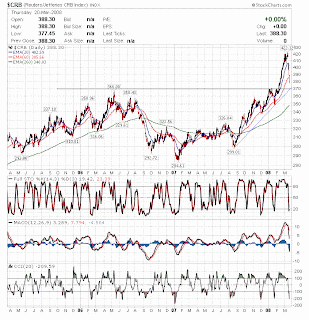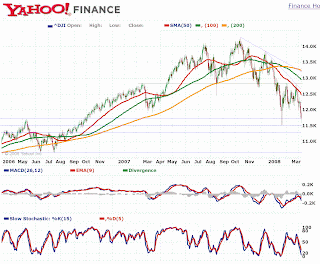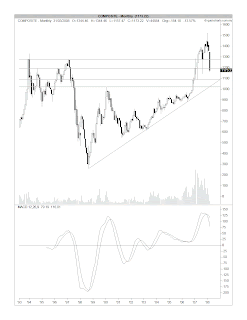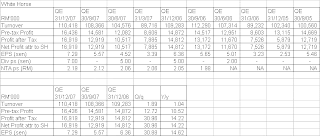If you like something for weekend reading- something that is cautiously bullish on the equity market- then I may have just the thing for you. The first story is entitled 'The Great Deleveraging' from Henry To, which will remind us of two old adages, i.e. 'Don't fight the Fed' and 'Don't fight the Tape'. The second article is the 4th Quarter 2007 commentary from Bill Miller, the Chairman & Chief Investment Officer of Legg Mason. Bill Miller, who is regarded as one of the greatest funds manager in the US, did not have a good year in 2006 & 2007. A few of the points made in this commentary are very interesting, but the most captivating comment is this:
The monetary and fiscal authorities have now begun to move with alacrity, with the Fed cutting the funds rate to 3.0% (with likely more to come), and the administration and Congress coming up with a fiscal stimulus package estimated at around $150 billion dollars.Will it be successful? Yes. More precisely, if these measures aren’t enough to free up credit and stimulate spending sufficient to set the economy on a growth path, then additional measures will be taken until that is accomplished. The important point is that the monetary and fiscal policy makers are focused and engaged, and will do what is necessary to stabilize the markets and restore confidence. This does not mean that the recovery will be swift, or seamless, or without additional trauma. But there will be a recovery, and I think the market abounds with good value. Those values may get even better if the markets get more gloomy, but they are good enough now for us to be fully invested. (The italic & bold letterings are mine).
Yes, the market is abound with stocks trading at very attractive multiples. If you haven't bought for your portfolio, I think it is still not too late to buy. The top blue chips, like Tenaga, Maybank & Sime Darby are very attractive. In the property sector, you can buy into stocks like IGB, Sunrise, Suncity and Mah Sing. Construction & construction-related stocks like IJM, MMC, MRCB and WCT had been beaten down badly & may recover after the Malaysian political scenario has stabilized.





































